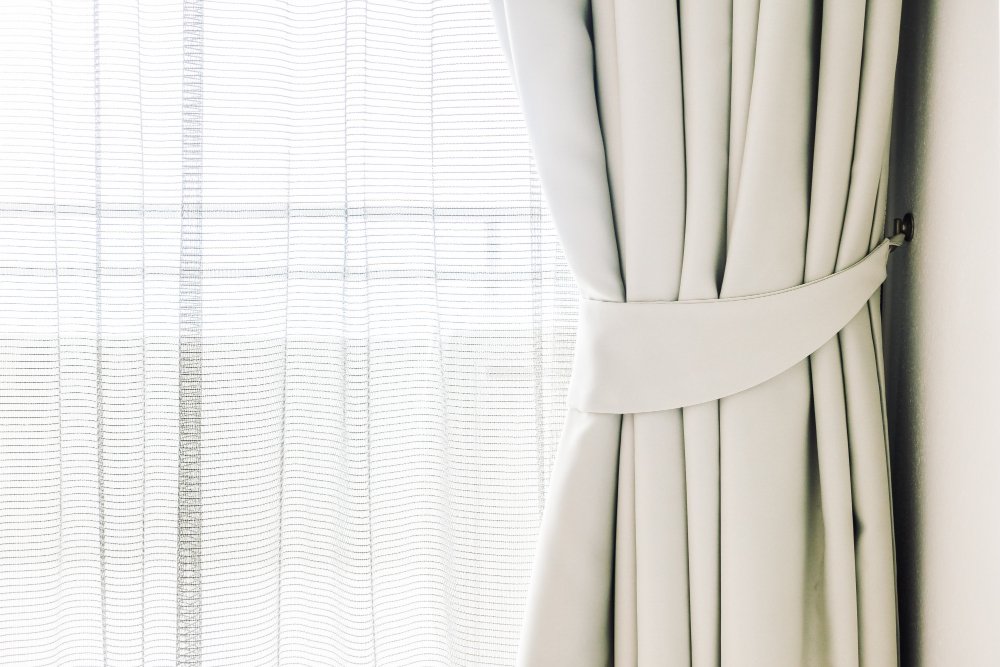
Living in bustling UK neighborhoods can be exciting, but the constant traffic, construction, and urban noise can significantly impact your quality of life. One effective solution for reducing unwanted noise is installing the right Curtain Fabric. This comprehensive guide explores the best curtain materials for soundproofing your home while maintaining style and functionality.
Understanding Sound Absorption and Curtain Properties
When it comes to noise reduction, not all fabrics are created equal. The effectiveness of curtains in sound absorption depends on several key factors, including density, weight, thickness, and weave pattern. Heavy, dense materials typically perform better at blocking sound waves compared to lighter fabrics. The way sound interacts with fabric involves both absorption and reflection, with optimal noise reduction requiring materials that excel at both properties.
Velvet: The Premium Choice for Sound Absorption
Velvet stands out as one of the most effective fabrics for noise reduction. Its dense pile construction and heavyweight nature make it excellent at absorbing sound waves. Traditional velvet curtains, particularly those made from cotton or polyester blends, can reduce noise levels by up to 15-20 decibels when properly installed. Modern varieties of velvet are also easier to maintain than their historical counterparts, making them a practical choice for contemporary homes.
Triple-Weave Blackout Fabrics: Dual-Purpose Solution
Triple-weave blackout fabrics have gained popularity in recent years for their excellent noise-reduction properties combined with light-blocking capabilities. These curtains typically consist of three layers: a decorative front layer, a dense middle layer, and a light-blocking back layer. This construction not only helps in reducing external noise but also provides thermal insulation. The middle layer, often made from a tightly woven synthetic material, acts as an effective sound barrier.
Suede and Faux Suede Options
Suede and its synthetic alternatives offer impressive sound-dampening properties while providing a luxurious appearance. Natural suede, though expensive, excels at absorbing both high and low-frequency sounds. Faux suede alternatives, made from polyester microfiber, offer similar acoustic benefits at a more affordable price point. These materials are particularly effective when lined with additional sound-absorbing layers.
Heavy-Weight Cotton and Cotton Blends
Cotton remains a popular choice for noise-reducing curtains, particularly when used in heavyweight varieties or blends. Look for cotton curtains with a weight of at least 340 GSM (grams per square meter) for optimal noise reduction. Cotton-polyester blends often provide enhanced durability while maintaining good sound-absorbing properties. These fabrics also offer excellent breathability and are relatively easy to maintain.
Thermal-Lined Curtain Solutions
Thermal-lined curtains combine noise reduction with energy efficiency. The additional lining layer, typically made from materials like acrylic foam or dense polyester, creates an extra barrier against sound waves. These curtains are particularly beneficial in UK homes, where both noise pollution and energy conservation are important considerations. The thermal backing also helps regulate room temperature, potentially reducing heating costs during colder months.
Professional Acoustic Curtain Materials
For those seeking maximum noise reduction, professional acoustic curtains offer the highest performance levels. These specialized curtains often incorporate multiple layers of sound-absorbing materials, including mass-loaded vinyl and high-density polyester. While they tend to be more expensive than standard curtains, they can reduce noise levels by up to 25-30 decibels when properly installed. These materials are particularly suitable for homes near major roads or flight paths.
Installation Techniques for Maximum Effectiveness
The effectiveness of noise-reducing curtains heavily depends on proper installation. Key considerations include:
The curtain rod should extend 15-20 cm beyond the window frame on each side to minimize sound leakage. Mounting the rod closer to the ceiling creates a longer drop, allowing the fabric to gather more fully and provide better sound absorption. Using double-track systems allows for layering different fabrics, enhancing both noise reduction and aesthetic appeal. The curtains should reach the floor or extend slightly beyond it to prevent sound from traveling underneath.
Maintenance and Care Considerations
Proper maintenance is crucial for preserving the noise-reducing properties of your curtains. Different fabrics require specific care approaches to maintain their effectiveness:
Velvet curtains typically need professional cleaning to maintain their pile structure. Blackout and thermal-lined curtains should be gently vacuum cleaned regularly to prevent dust accumulation. Cotton and cotton blend curtains can usually be machine washed but may require special temperature settings. Professional acoustic curtains often come with specific manufacturer cleaning guidelines that should be strictly followed, you can also prefer Yorkshire Fabric Shop.
Conclusion
Selecting the right curtain fabric for noise reduction requires careful consideration of various factors, including material properties, installation methods, and maintenance requirements. While premium materials like velvet and professional acoustic curtains offer the best performance, other options like triple-weave blackout fabrics and thermal-lined curtains provide excellent noise reduction while remaining budget-friendly. The key is to choose a solution that balances your specific noise reduction needs with practical considerations such as maintenance, cost, and aesthetic preferences.
Frequently Asked Questions:
-
How much noise reduction can I expect from soundproof curtains? Quality soundproof curtains can reduce noise levels by 15-30 decibels, depending on the material and installation. Professional acoustic curtains offer the highest noise reduction, while standard heavy fabrics typically provide 10-15 decibels of noise reduction.
-
Are there any affordable alternatives to expensive acoustic curtains? Yes, triple-weave blackout curtains or heavy cotton curtains with thermal lining can provide good noise reduction at a lower cost. Layering multiple curtains can also enhance sound absorption without the expense of professional acoustic materials.
-
How do I clean noise-reducing curtains without damaging their sound-absorbing properties? Most noise-reducing curtains require gentle cleaning methods. Regular vacuuming with a soft brush attachment is recommended for all types. For washing, always follow the manufacturer's care instructions, as some materials may require professional cleaning.
-
Can I combine different curtain materials for better noise reduction? Yes, using a double-track system allows you to layer different curtain materials. For example, combining a heavy velvet curtain with a thermal-lined curtain can enhance both noise reduction and insulation properties.
-
How important is the installation method for noise-reducing curtains? Installation is crucial for optimal noise reduction. Proper mounting height, rod extension beyond window frames, and floor-length coverage are essential factors. Professional installation may be worth considering for maximum effectiveness, particularly with heavier materials.
You can also read: Top 5 Trusted Carpet Cleaners in Brooklyn, NY

0 Comments
Post Comment